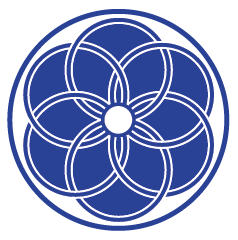there are a thousand ways
Recently a particular Tai Chi instructor from my past has been in my thoughts. This is for him…
Many years ago, I met a Tai Chi teacher who was quite the mystery to me. Without meaning to, he presented me with a puzzle, the depth of which I would not really work out until some years later. His lesson has shown up again and again as I’ve worked with many awesome teachers and students and continued to evolve my understanding of the art.
In short, the lesson for me is this: There is no one true or correct way to interpret, define, or practice Tai Chi (or qigong for that matter). I’ll explain what I mean: This particular teacher had come to Tai Chi following a serious injury which left him with intense pain and mobility issues. His work and social life were challenging at best. Upon encountering Tai Chi, he had an inspiration. After a few lessons, he decided to study on his own in such a way as to rehabilitate himself, one slow step at a time.
By the time I met him, he had recovered marvelously. He was also working with students, sharing what he had learned, teaching Tai Chi… As I watched him move, the young student in me was shocked. I remember having such thoughts as: Uh, I’m pretty sure that isn’t Tai Chi; There’s no way that would work in a fight; and This doesn’t make any sense at all!
Fortunately, we’re not the content of our thoughts, and it later occurred to me that regardless of how different his approach to the art was, it was working! It obviously felt good in his body, had facilitated his healing, and was of value to his students! Who was I to offer any further comment on it other than, good for him!
This was a liberating realization for me, and continues to be so. Over the years, I’ve seen many, many approaches to Tai Chi and qigong. Variations exist within movement interpretation, semantics, application, and even theory and principles. There are differing points of view as to how flexible Tai Chi is as a discipline, how it relates to other martial styles, and how much it can be altered depending on the needs of the student… or circumstances.
Where I land on all this can be summarized by the idea that Tai Chi exists to serve the evolving best interest of the practitioner. Students bring to the art their history, their challenges, their strengths, and the unique complexity of their body-mind. We use our Tai Chi, respecting where we are in any given moment, to strengthen, refine, and develop ourselves on many levels. The various forms and practices are tools to further realize our potential. As we grow and evolve as practitioners, our abilities improve as do the tools and understandings we employ. Happily, all this can be a lot of fun and is very rewarding along the way…
I believe, to be honest, that some approaches to Tai Chi are more developed and respectful of “body logic” than others. But all of us can improve the wisdom and ability with which we use our marvelous body-mind. We can all learn more, include more, expand and go beyond what we have mastered so far, and do so with respect for ourselves and those around us.
This means that anyone can learn and benefit from Tai Chi and/or qigong. Given an open mind and willingness to explore and cultivate what works, we can all find a way to practice that feels good and moves us forward.
I’ve long since lost touch with the teacher mentioned above, but I remain grateful to him and all the other bright souls who have and continue to inspire and enlighten my practice.
